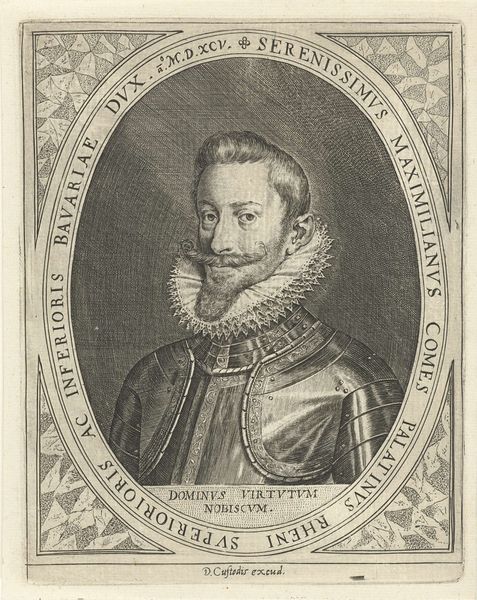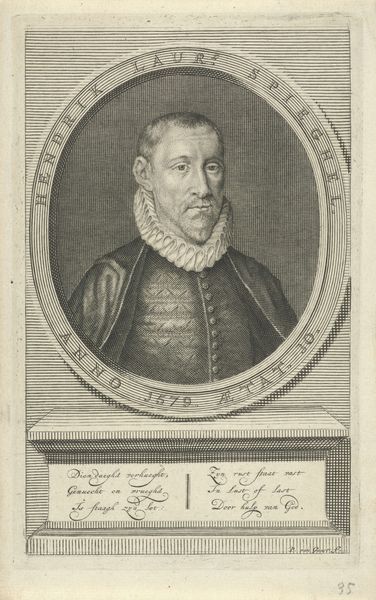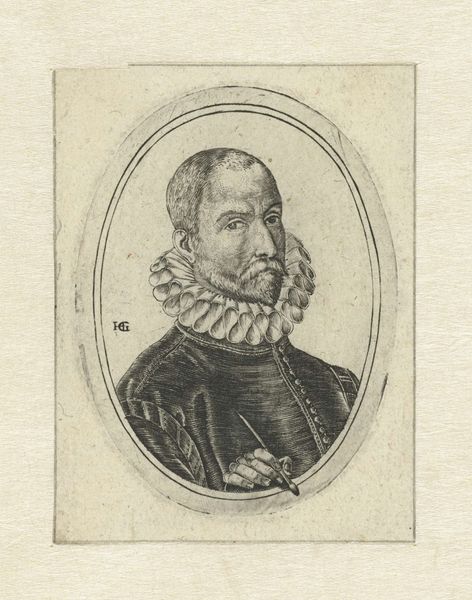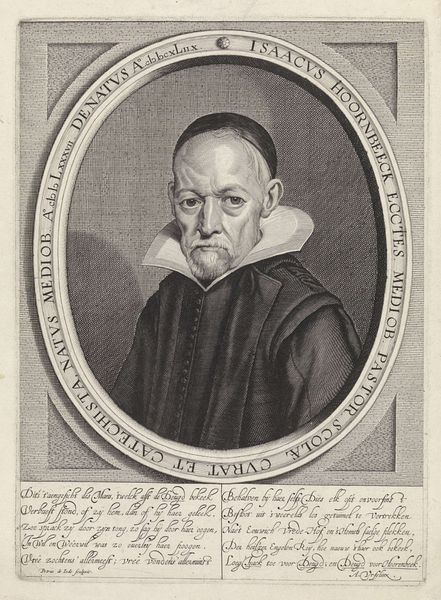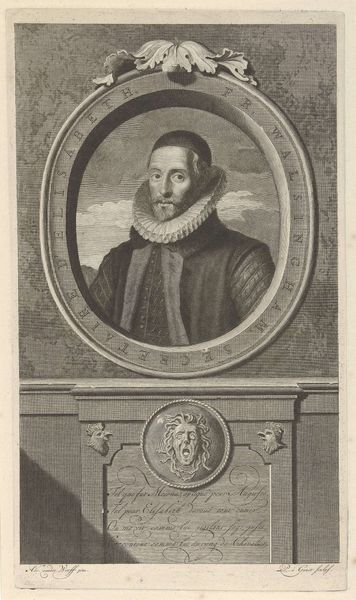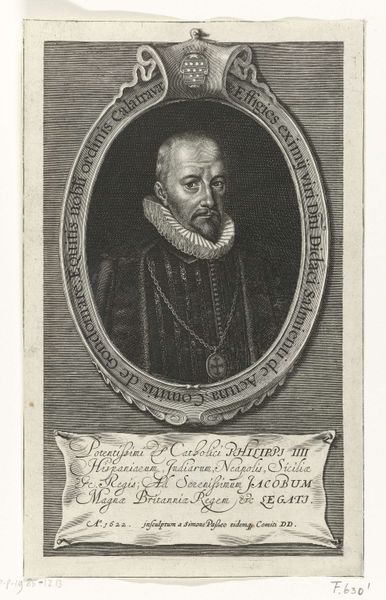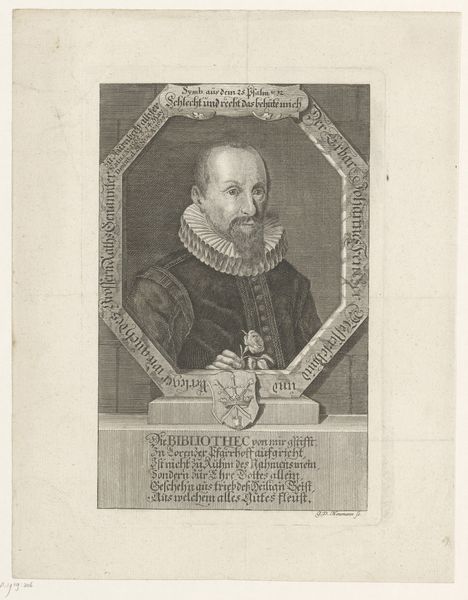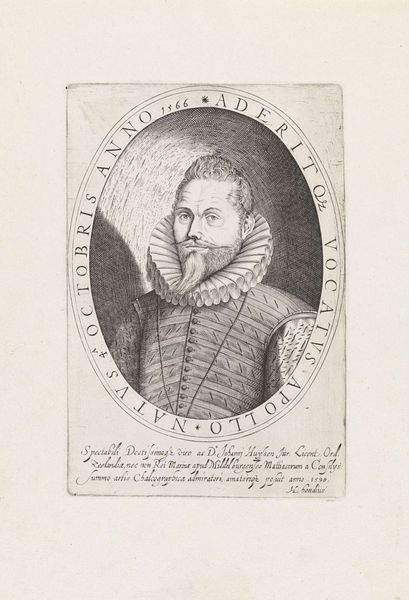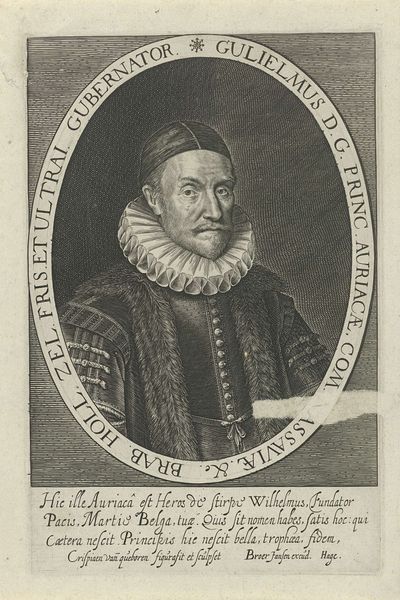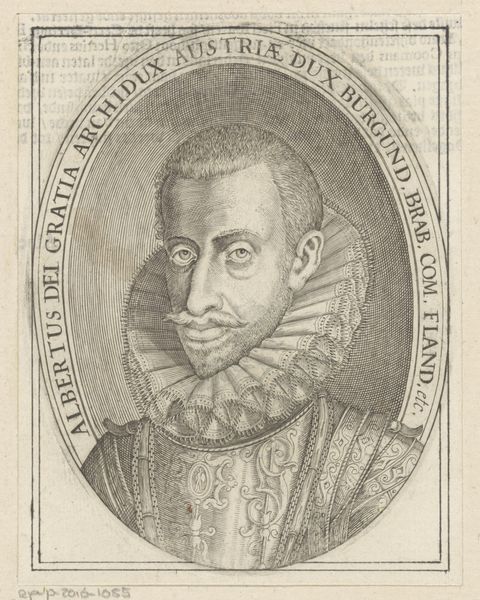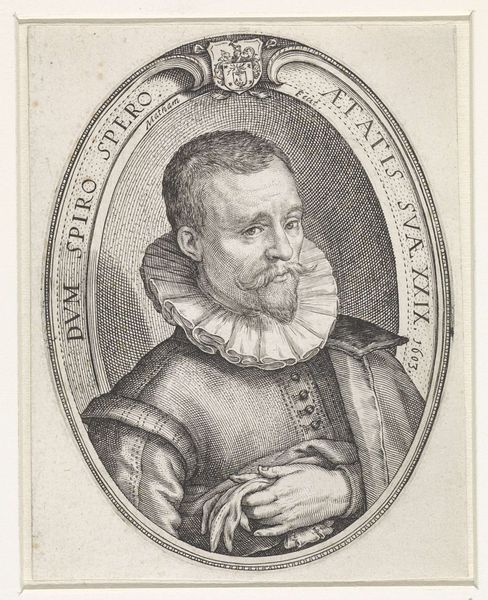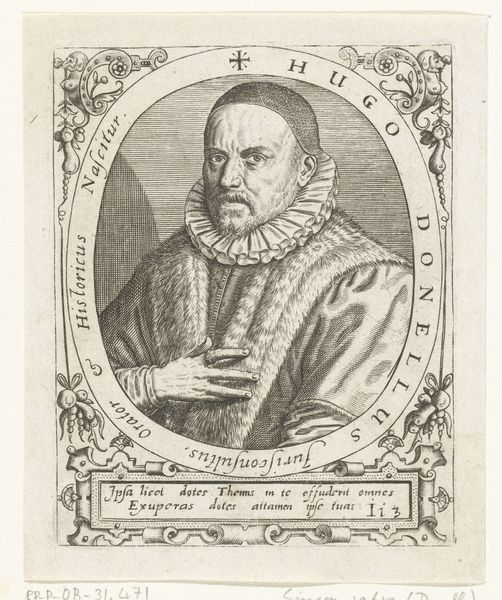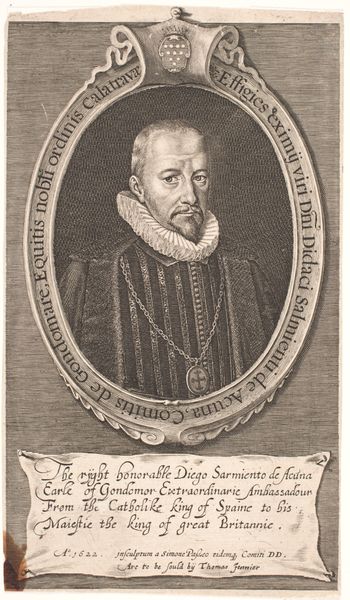
print, intaglio, engraving
#
portrait
#
baroque
# print
#
intaglio
#
old engraving style
#
engraving
Dimensions: height 299 mm, width 210 mm
Copyright: Rijks Museum: Open Domain
This is Baltzar Lölinck’s portrait of Albert Thomae, made with engraving, a printmaking process that involves cutting lines into a metal plate, inking it, and then pressing it onto paper. The linear quality of the engraving, created by the artist using a tool called a burin, defines every aspect of the image, from the sitter's facial features to the elaborate ruff around his neck. Look closely, and you will see how the density and direction of the engraved lines create tonal variations, giving depth and volume to the figure. The act of engraving requires considerable skill and precision. It’s a labor-intensive method, which would have been further compounded by the need for Lölinck to reverse the composition as he worked, so that it would read correctly when printed. Although prints are often considered secondary to painting or sculpture, they were a crucial means of disseminating images and ideas in early modern Europe. The fact that this portrait was engraved suggests its intended audience was wider than just the sitter and his immediate circle, reflecting the growing importance of the printing press in shaping public opinion. By focusing on the material and process of this artwork, we can better understand its place in the visual culture of its time.
Comments
No comments
Be the first to comment and join the conversation on the ultimate creative platform.
